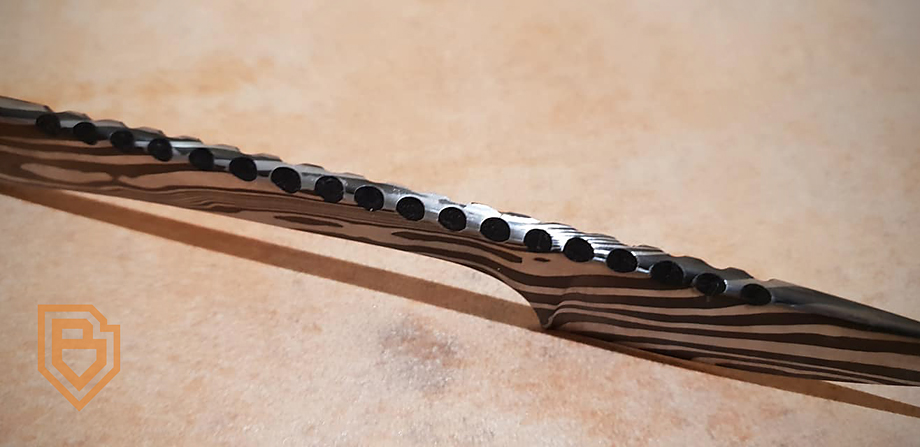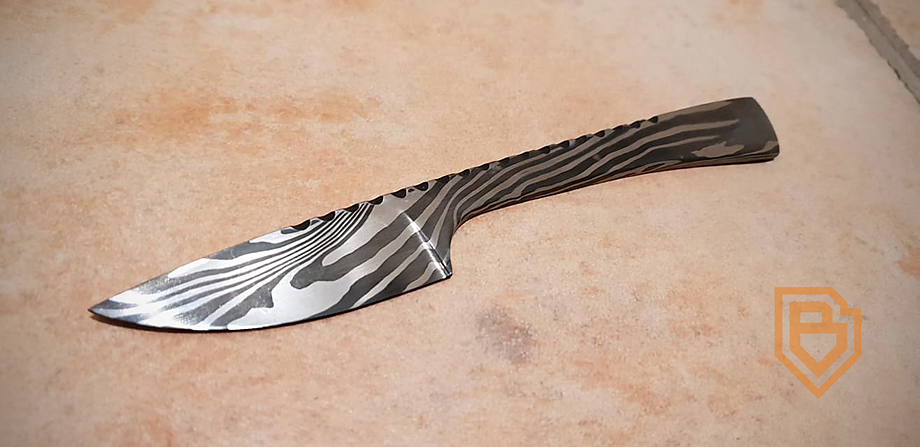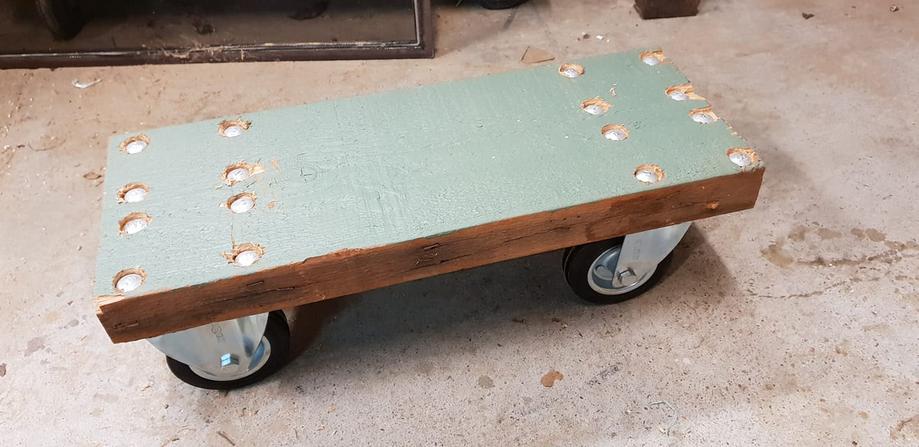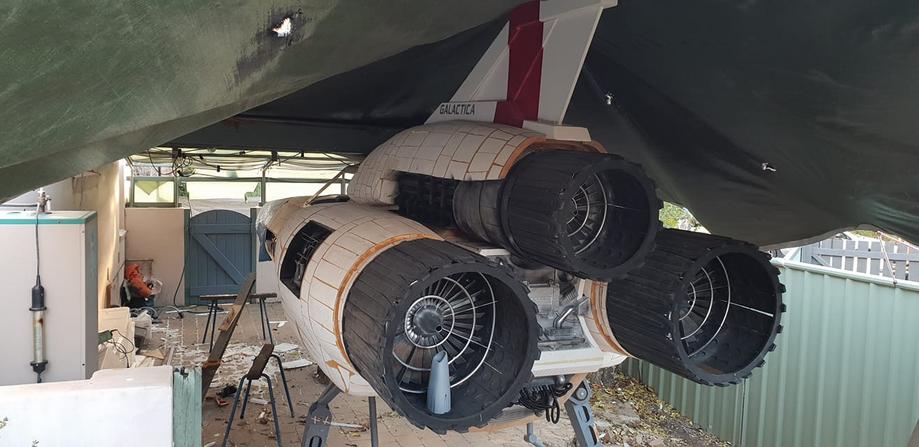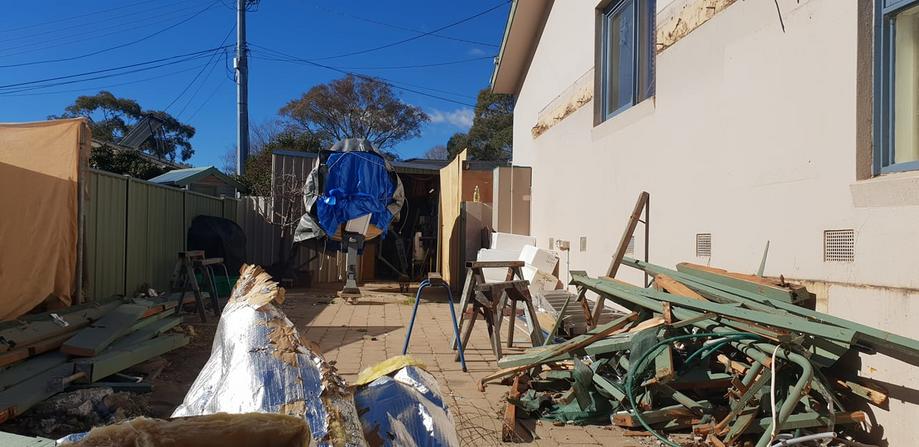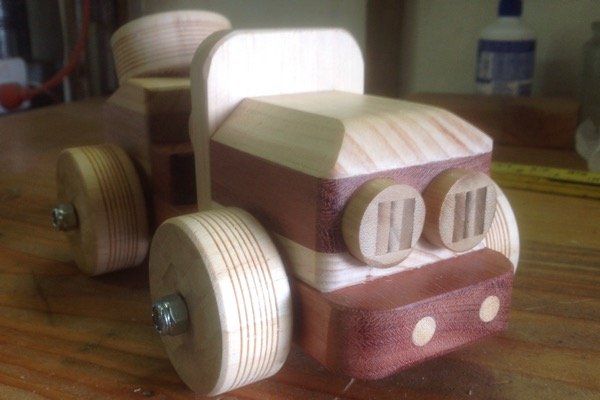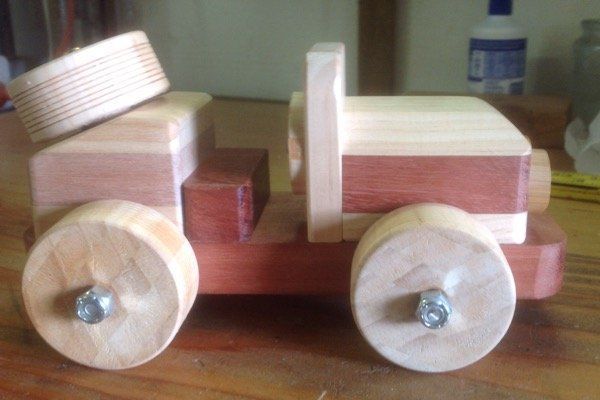- Joined
- Jan 9, 2019
- Messages
- 832
- Reaction score
- 4,186
Finished this one yesterday.
Offcuts from the ends of Damascus, (*modern) billets.
I love these random chunks of metal. You don't know who made them or how they were made, how many layers or anything. Inspected through the bucket of stubs, looking for any that might be OK, then bash 'em out and see what you get. Some de-lamination here and there, but these are rejected off-cuts for a reason. Forged, ground and polished, then dropped in thick-as-mud, cheapo coffee overnight to see what happens in the morning.
Turned out OK.
*Modern Damascus - because so many keyboard warriors get precious about calling it Damascus.... https://en.wikipedia.org/wiki/Damascus_steel
The two steels are 1075 and 15n20. Essentially the same, but the 15n20 has a little bit of nickel in it. They are stacked in alternate layers, then hammered together while super heated, then manipulated into patterns, forged into a knife, ground, highly polished, then etched in ferric chloride, coffee or both. The steel with less nickel in it absorbs the stain of the coffee. Coffee is also acidic, so it etches the metal.
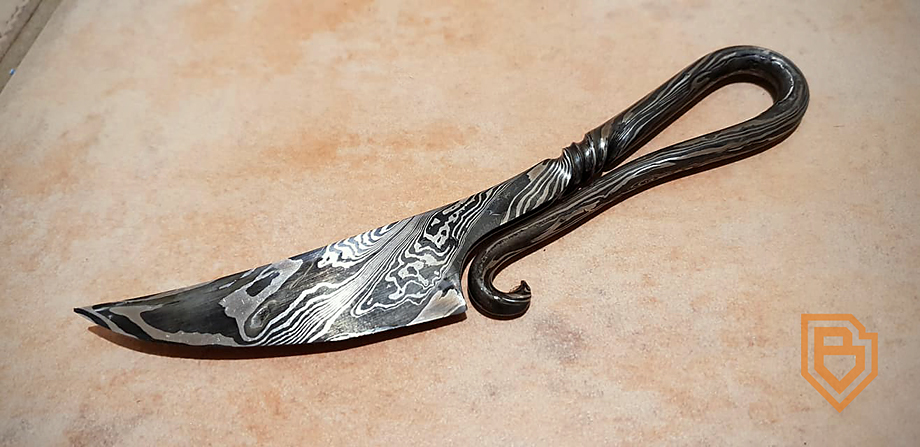
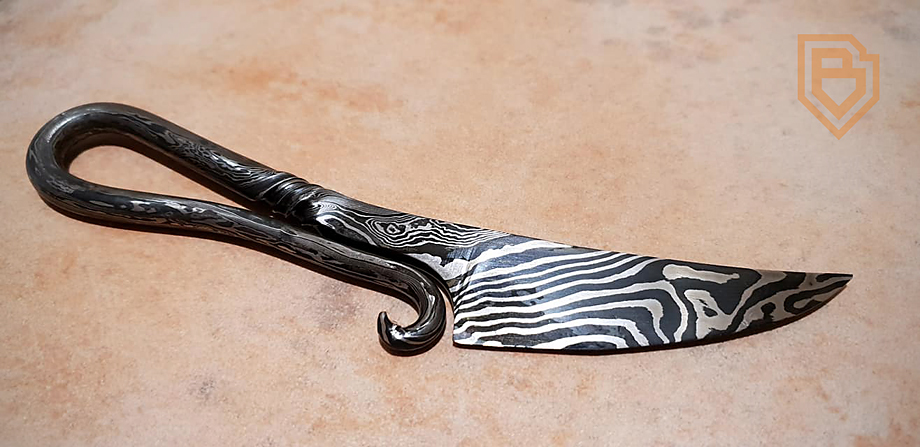
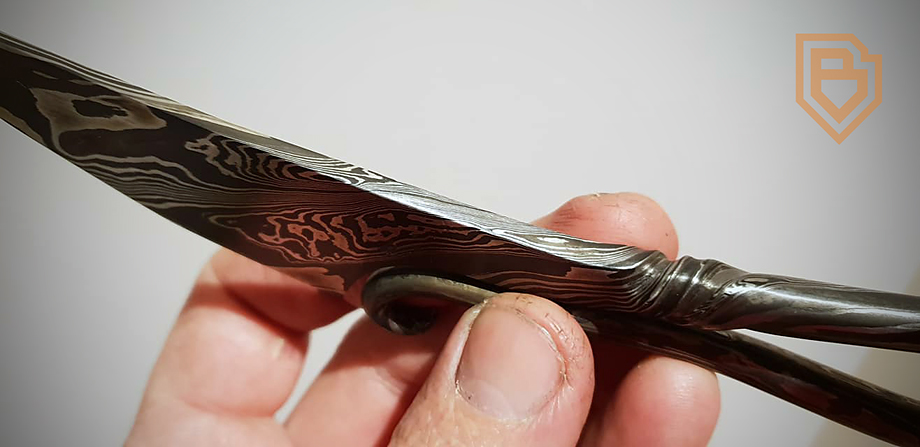
Offcuts from the ends of Damascus, (*modern) billets.
I love these random chunks of metal. You don't know who made them or how they were made, how many layers or anything. Inspected through the bucket of stubs, looking for any that might be OK, then bash 'em out and see what you get. Some de-lamination here and there, but these are rejected off-cuts for a reason. Forged, ground and polished, then dropped in thick-as-mud, cheapo coffee overnight to see what happens in the morning.
Turned out OK.
*Modern Damascus - because so many keyboard warriors get precious about calling it Damascus.... https://en.wikipedia.org/wiki/Damascus_steel
The two steels are 1075 and 15n20. Essentially the same, but the 15n20 has a little bit of nickel in it. They are stacked in alternate layers, then hammered together while super heated, then manipulated into patterns, forged into a knife, ground, highly polished, then etched in ferric chloride, coffee or both. The steel with less nickel in it absorbs the stain of the coffee. Coffee is also acidic, so it etches the metal.








